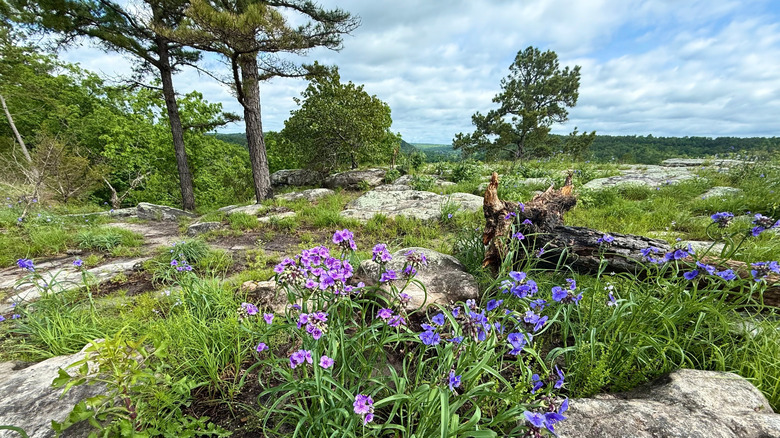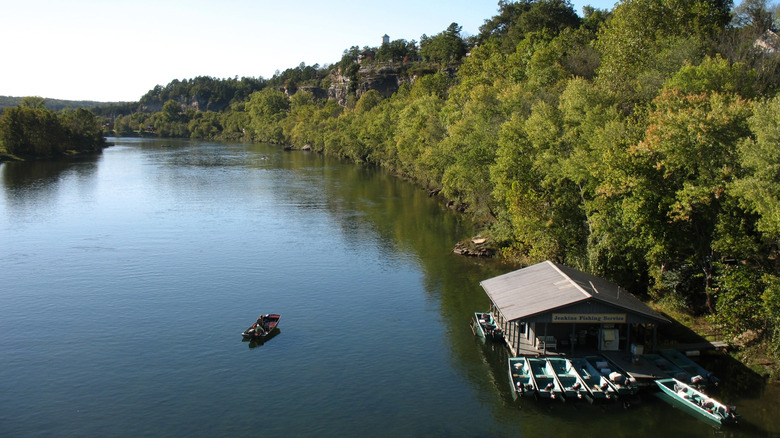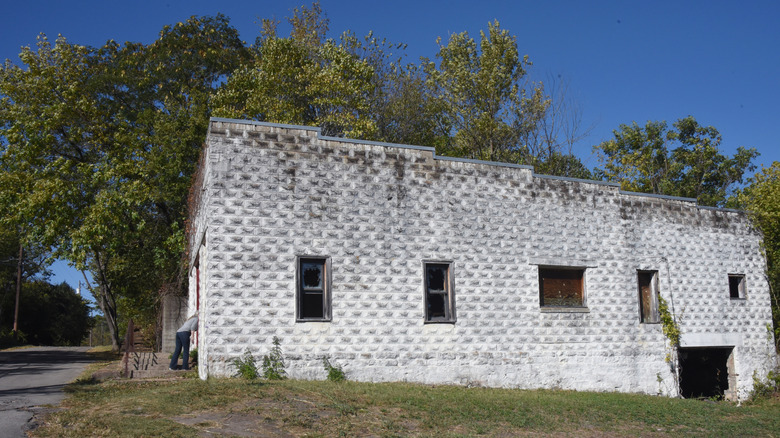Between Norfork And Batesville Is Arkansas' Town Pairing Trout Fishing And Trails With A Quaint Downtown
Most city names in the United States belong to multiple states. Springfield, Franklin, and Centerville can be found throughout the nation. Arkansas is home to the world's one and only Calico Rock. This city's name was created by French fur traders around 1820. After seeing White River's multi-colored bluffs, it reminded them of calico cloth, prompting the traders to name the area "Calico Roche" or "Calico Rock" as it's known in English.
After the town was destroyed by a major fire in 1897, construction began on the St. Louis and Iron Mountain Railway in 1902. The Bank of Calico Rock was built in 1903, with multiple other buildings added until 1923, when another fire destroyed most of the rebuilt town. Rebuilding once again took place during the late 1920s into the 1930s. Today, travelers can enjoy this beautiful town due to the tenacity and hard work of the pioneers who created the town not once, but twice. Neighboring the city of Calico Rock is the Ozark National Forest, which is enveloped by the Arkansas Ozark Mountains. Also nearby is the Blanchard Springs Recreation Area.
Driving to Calico Rock requires passing through neighboring cities, such as Norfolk, Arkansas, about 13 miles away. Batesville, Arkansas is a bit further, with a 51-mile drive. For those planning to fly, landing at the Branson, Missouri airport will require an approximate two-hour drive to reach Calico Rock.
Calico Rock provides plenty of outdoor fun with trout fishing and hiking trails
Throughout Arkansas and into the southern portion of Missouri, the White River stretches over 720 miles. With a starting point in the Natural State's Boston Mountains, the river crosses into the Show Me state before returning to Arkansas and emptying into the Mississippi River. The White River is shallow at certain points, and it's recommended that visitors hire a guide. Calico Rock Trout Dock is a professional trout guide service offering guided boat rides, boat rentals, and guided fishing trips for trout. Rainbow trout are a main draw for anglers, with trophy browns and cutthroats providing a nice catch as well. White River remains well-stocked with rainbow trout thanks to the many local fish hatcheries, including one in nearby Neosho, Missouri.
Two specific trails provide nature-filled walkways in the area. Sylamore Scenic Byway is over 26 miles long, leading outside of the city limits, while providing views of a roadside waterfall and the surrounding forest. Rand Park Hiking Trail is less than a mile long and is an out-and-back trail. Both trails are dog-friendly, provided they remain on a leash.
For overnight stays, the Calico Bluff Cabins blend comfort with nature. Offering duplex cabins that can accommodate up to 20 people on each side, as well as intimate cabins that can house up to six, the Calico Bluff Cabins provide all the comforts of home with the scenic Arkansas beauty that is unsurpassed. Kids 12 and under stay free, with all guests having access to over 80 acres of the Arkansas Ozark Mountains to explore.
East Calico features a ghost town that folds into the city's Main Street
Similar to a preserved mining town in Montana, Calico Rock's eastern portion is a well-preserved ghost town. Situated mere yards from the thriving downtown area, this portion of town, called Peppersauce Alley, easily allows guests to travel back in time to view more than 20 historic 100-year-old buildings from the city's yesteryears. Three buildings on display include a barbershop, a funeral home, a cotton gin, and an old jailhouse.
Once the tour of the past version of Calico Rock is complete, a few steps will lead back to today's modern version of the city. Stone and brick buildings line Main Street, housing businesses such as antique stores, cafes, and providing access to the White River. The Calico Rock Museum and Visitor's Center takes pride in the community heritage, and enjoys sharing the rich past with visitors. There's even a discovery center that shows why the area was developed and the survival of a town destroyed twice by fire.


